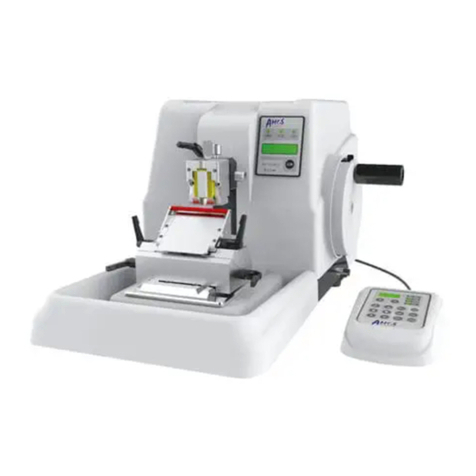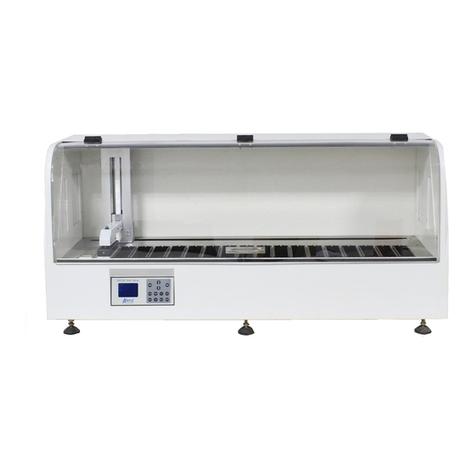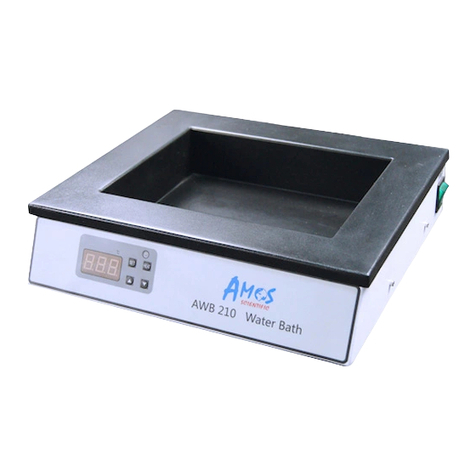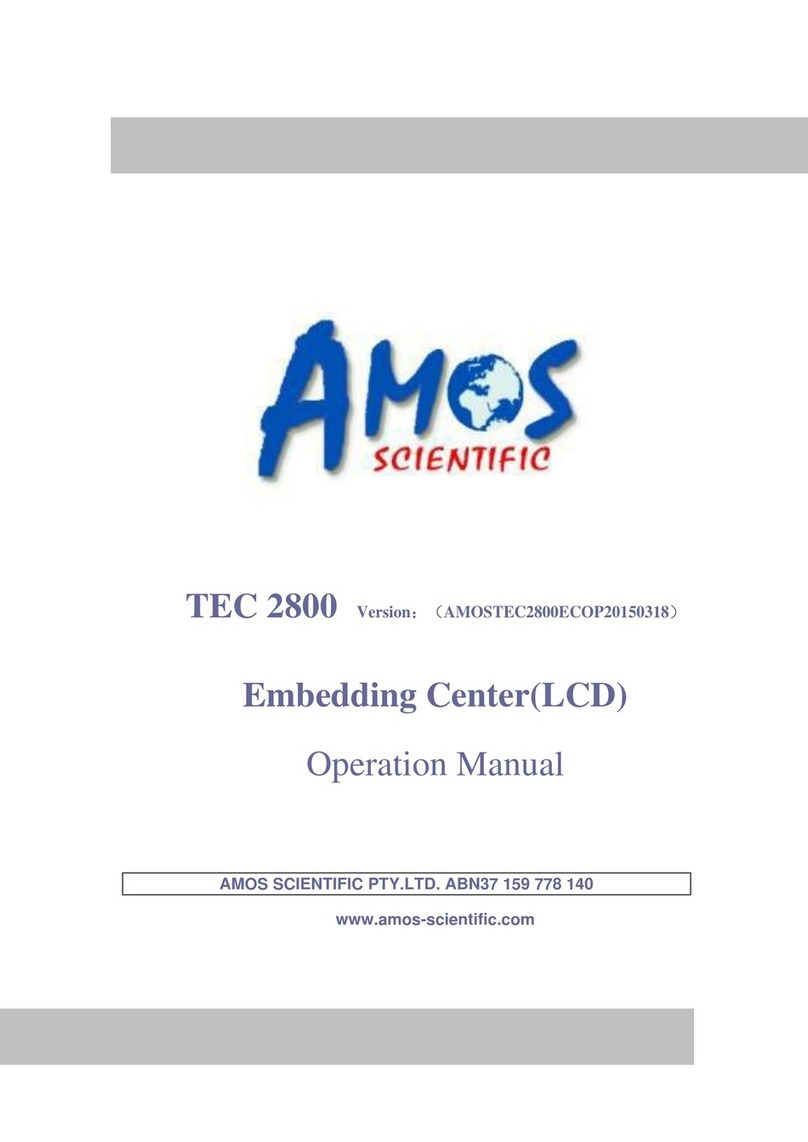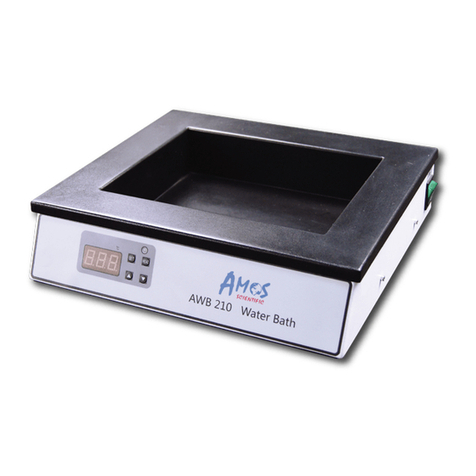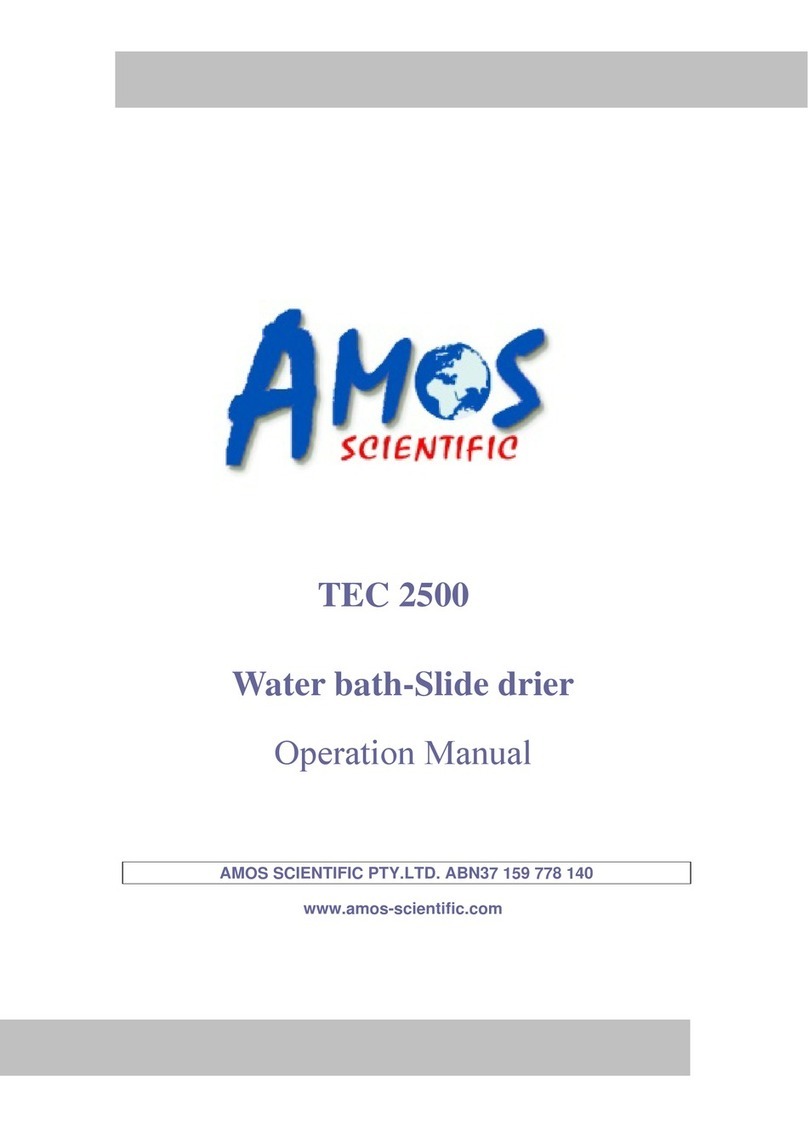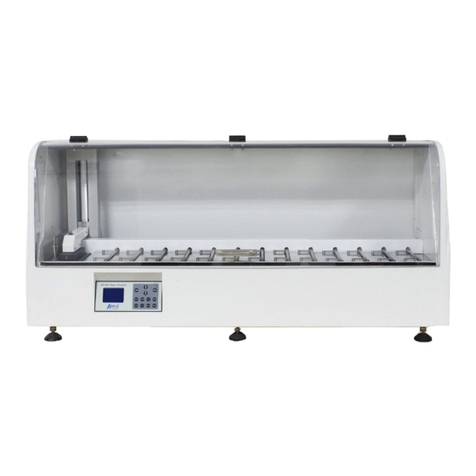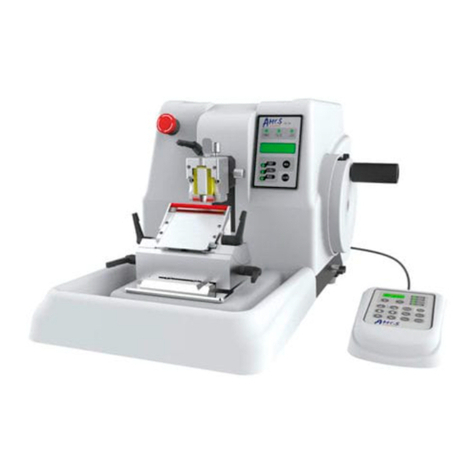
3
the sliding plate. Once the machine is initially “dry set”, only one adjustment should be made at
a time because the different adjustments interact with each other.
The operation of all spirals is based on shape and surface texture of the seed. The spiral
separates flattened particles and those with roughened seed coats from smooth round seed.
The round seed roll off the spiral flighting and the flattened culls slide down the flights. The
good round product rolls out into the cabinet and the culls go back inside the tubes at the bottom
of the cartridge.
The feed rate is controlled by a threaded cone at the top of each spiral cartridge. Below the
cone is a locking nut to prevent unintended changes. Adjusting the feed rate is a bit of a trial
and error system. The flow should be adjusted so that each cartridge is fed evenly and will
handle the proper flow rate. The faster a spiral is fed the more product it will remove, both good
and bad. A basic rule of thumb is that the Model 200 with four spiral cartridges will handle about
2,700 kg per hour of soybeans. This will vary depending on the roundness of the product.
When the good product is round, the operator will get more capacity than when the good
product is slightly flattened. If the machine is cleaning out too much good product you may
need to slow the feed rate.
The spiral separator has either 2, 4 or 6 individual spiral cartridges within the cabinet. Each
spiral cartridge has 8 flights with 4 complete turns from top to bottom. Normally, about 65% of
the good seed come off the flights within the first two turns. Culls with rough seed coats or
slightly flattened seed begin coming off with the good round product further down the spiral. By
the fourth turn there should be very little good seed left on the spiral. These principles allow the
operator to adjust the fingers and sliding plate.
There are two sets of fingers on each spiral cartridge, one at the top turn and one at the bottom.
The fingers are always set pointing downhill. The purpose of the fingers is to keep product on
the flights so that a proper separation may be made. Moisture content of the seed
determines how the fingers are set. When the moisture of the seed is 11% or less, the top
set of fingers is always used. Dryer seed are slicker than moist seed and tend to come off the
flights without being properly sorted. The top set of fingers should be set so that the tips of
fingers are about 1” - 1 ½” from the edge with dry seed. If the moisture content is higher move
the tips closer to the edge. With high moisture seed the top set of fingers sometimes may not
be used. The bottom set of fingers is used to prevent cull seed or splits from rolling off the
flights. If more cleanout is required set the tips of the bottom set 1” – 2” from the edge of the
flights. If there is two much cleanout set the finger tips closer to the edge.
The sliding plates are also used to regulate the amount of cleanout. If the good seed are round
the sliding plates are normally adjusted closer up to the edge. This insures that culls are
directed into the tube. When the good seed are more flattened, the sliding plate is adjusted
down toward the tube to reduce cleanout of good seed. Often in years with dry weather the
good seed are more flattened. Some varieties are also flatter than others. Both of these
conditions result in larger than acceptable cleanout of good product. The sliding plate is critical
to balance retaining good product and removing the culls. When it is adjusted up, more is
removed. When adjusted down toward the tube, less is removed. If the cleanout is too high,
slide the plate in and down. If the cleanout is too low, slide the plate out and up.
The AMOS spiral separator can be used in elevators to remove corn from commercial
soybeans. When so used the soybean-corn mixture must be first run over a scalper before the






